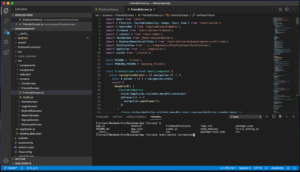



So it can be a natively rendered mobile app for iOS or for Android. Some specific steps can be followed depending on the type of platform: iOS (Objective C), Android (Java), iOS (Swift), and iOS (Objective C). With just a few steps, you can add new React Native-based features, screens, views, etc. If you wish to create two versions of the app for different operating systems, you may start writing the program in React Native or may even consider adding a single view or user flow to existing native applications. However, if you wish to add features into existing applications, React Native is equally good. React Native works well if you wish to create an app to run on Android and iOS platforms. How to add React Native features into existing Android and iOS Apps? Most of the cross-platform tools are web-based, so this makes it easy to find people experts in cross-platform app development. Native Developers do cost more due to the required expertise and are also difficult to obtain.

The business has less chance to grow if they code for only one platform.Ī business gets the double benefit as it can be promoted twice, across different platforms, and amongst a different set of users.ĭesign and development are supported by the services provided by the OS.ĭevelopers need to add some features specific to the platform explicitly, so the design environment does come across some challenges. This way the code is reusable and reduces the time to market. The code written once can be used across multiple platforms with some modifications to fit into. The app source code is to be written separately for each platform.Īndroid SDK, iOS SDK have to be used for different projects. It does not require any additional investment to deploy across various platforms. This does cost a bit.Ĭross-platform app development can help development teams save at least 80% of the project budget. Native Application Development always requires adopting a particular architecture for deploying across multiple platforms.


 0 kommentar(er)
0 kommentar(er)
